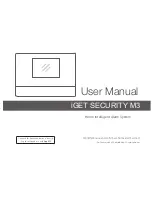
D400-54-00
3
I56-690-04
Testing
Before testing, notify the proper authorities that the heat
detector system is undergoing maintenance, and therefore
the system will temporarily be out of service. Disable the
zone or system undergoing maintenance to prevent un-
wanted alarms.
Detectors must be tested after installation and periodic
maintenance. Test the detector as follows:
A. Test Magnet (System Sensor Model M02-04)
1. Position the magnet against the cover opposite the
test module socket. (See Figure 1.)
2. The LEDs on the detector should light within 10 sec-
onds. If the LEDs fail to light, check the power to the
detector and the wiring in the detector base.
3. Reset the detector at the system control panel.
B. Test Module (System Sensor Model MOD400R)
The MOD400R is used with a DMM or voltmeter to
check the detector sensitivity as described in the
module’s manual.
C. Direct Heat Method (Heat Gun)
1. From the side of the detector, direct the heat toward
the sensor. Hold the heat source about 15 cm away to
prevent damage to the cover during testing.
CAUTION
Avoid exposing the detector cover to the heat source for
more than 15 seconds. Extended periods of extreme heat
can melt the plastic and damage the cover.
NOTE:
If a detector goes into alarm, it will reset only if the
detector has cooled and if its power is momentarily
interrupted. Check the control panel being used to
determine whether the RESET switch (or some
other auxiliary device or control) momentarily cuts
off power to the detector loop.
Detectors that fail these tests should be cleaned as de-
scribed under MAINTENANCE and retested. If the detec-
tors still fail these tests they should be returned for repair.
Maintenance
The 4451HT and 4451HTA detectors have been designed to
be as maintenance-free as possible. Normal air-borne dust,
however, can accumulate on the detector’s sensing ele-
ments and cause them to become less sensitive. All detec-
tors should be tested and cleaned at least once a year, and
those in dustier areas should be tested and cleaned more
often. Detectors must also be cleaned and tested immedi-
ately after a fire.
Before cleaning, notify the proper authorities that the sys-
tem is undergoing maintenance and therefore the system
will temporarily be out of service. Disable the loop or sys-
tem undergoing maintenance to prevent unwanted alarms.
1. Remove detector from mounting base.
2. Use a vacuum cleaner to remove dust from the sensing
chamber.
3. Reinstall the detector.
4. Test the detector as described under TESTING.
Technical Manuals Online! - http://www.tech-man.com





















